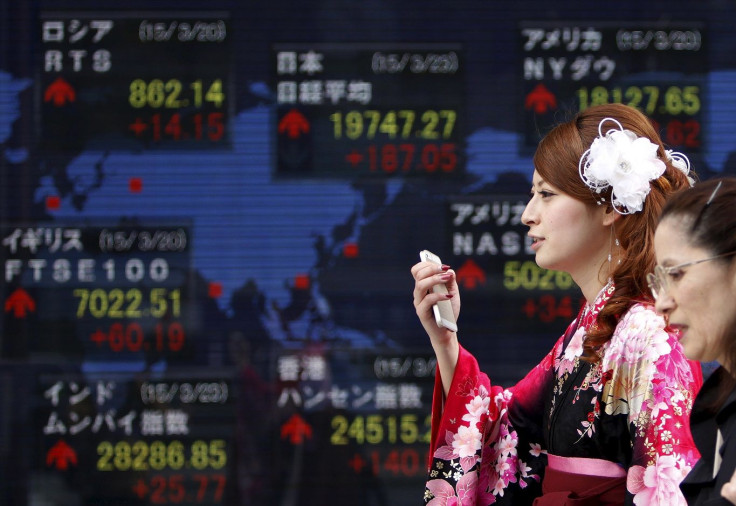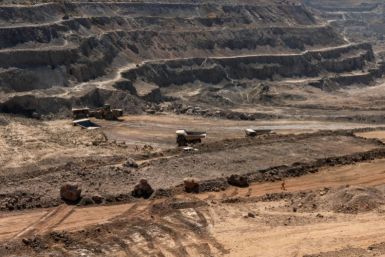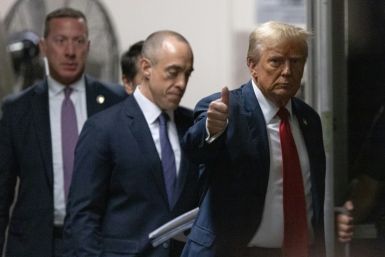Global Markets Overview - May 29, 2015

Bleakness of the bleakest kind
Private investment levels in this country are at levels that make pessimism look positively happy.
The state of play:
· The March quarter private capital expenditure figures registered a 4.4% decline quarter-on-quarter and 5.3% decline year-on-year. This paint one of the bleakest pictures in years (the lowest read since 2011 but we currently have the lower cash rate in the modern era).
· A complete collapse in the second CAPEX read estimate for 2015-16 has UBS using the R-word (yes, ‘recession’) and Goldman Sachs ramping up its call for another rate cut come August, with the possibility of one more later in the year.
· CAPEX intentions for 2015-16 only increased by 1% and the $104.03 billion figure was 9.6% below the market’s expectations – that’s a 10% decline on intentions from 2014
· All parts of the CAPEX numbers were red on previous numbers. The declines in mining are a known known. However, the declines in the non-mining space are a massive surprise and a scary reminder of its fragility.
· The great white knight of Australian private investments is not only not riding into to rescue the economy from falling off a cliff – it’s running away.
· If you adjust the figures for a firm bias, the CAPEX numbers show non-mining sectors are set to decline by 10% in 2015-16; expectations were for a 4% decline up from a 7% decline in the previous quarter. The acceleration of the decline in spending intentions is a blow to confidence.
· Business confidence now appears to be completely devoid and conditions look like they are unable to counter the decline.
· So what does the RBA do now? It is devoid of ideas of how to counter the severe decline in private investment intentions and no manner of interest rate cuts are going to fix the declines in the short term. The rates chamber is bare and terminal rates appears to have been reached, judging by the previous statement.
· The statement of monetary policy indeed has an easing bias but statements from Deputy Governor Philip Lowe and Assistant Governor Malcolm Edey suggest further rate cuts may not have the effect required. In fact, they may simply continue to heat the housing market rather than stimulating growth.
· So if monetary policy is unable to work in its intended manner – what are the other options? Fiscal policy? (Unlikely), Tax reform? (Needed but unlikely to be forthcoming or targeted correctly) Wealth creation? The ASX has closed higher for the last three years and property has grown substantially – yet drilling into listed firms’ earnings and top-line numbers shows they’re weak and property is moving in pockets rather than uniformly. Wealth is uneven.
Conclusion: The RBA will be back in the limelight. Expectations of further cuts will build. Yet nowhere on the interbank market curve is the market pricing in a 100% chance of a cut by year end and in the next three months the highest read is August at 33%. No further easing is really expected.
Firms will therefore need to go it alone when it comes to further intentions. Growth has to come from the top line as trimming costs is a finite game – if earnings and revenue do not return soon, expect the picture to be bleaker still.
Ahead of the Australian open
We are currently calling the ASX up seven points to 5720. The SPI futures market is up 7 points to 5729 for the June close.
Asian markets opening call | Price at 8:00am AEDT | Change from the Offical market close | Percentage Change |
Australia 200 cash (ASX 200) | 5,720.40 | 7 | 0.13% |
Japan 225 (Nikkei) | 20,547.50 | -4 | -0.02% |
Hong Kong HS 50 cash (Hang Seng) | 27,564.10 | 110 | 0.40% |
China H-shares cash | 14,218.70 | 36 | 0.25% |
Singapore Blue Chip cash (MSCI Singapore) | 380.70 | -1 | -0.18% |
US and Europe Market Calls | Price at 8:00am AEDT | Change Since Australian Market Close | Percentage Change |
WALL STREET (cash) (Dow) | 18,144.40 | 19 | 0.10% |
US 500 (cash) (S&P) | 2,123.71 | 3 | 0.16% |
UK FTSE (cash) | 7,043.30 | 15 | 0.23% |
German DAX (cash) | 11,699.90 | -42 | -0.36% |
Futures Markets | Price at 8:00am AEDT | Change Since Australian Market Close | Percentage Change |
Dow Jones Futures (June) | 18,131.50 | 16.50 | 0.09% |
S&P Futures (June) | 2,121.63 | 3.25 | 0.15% |
ASX SPI Futures (June) | 5,729.00 | 6.50 | 0.13% |
NKY 225 Futures (June) | 20,562.50 | -10.00 | -0.05% |
Key inputs for the upcoming Australian trading session (Change are from 16:00 AEDT) | Price at 8:00am AEDT | Change Since Australian Market Close | Percentage Change |
AUD/USD | $0.7662 | -0.0030 | -0.34% |
USD/JPY | ¥123.830 | -0.105 | -0.08% |
Rio Tinto Plc (London) | £29.20 | 0.39 | 1.35% |
BHP Billiton Plc (London) | £14.03 | 0.24 | 1.70% |
BHP Billiton Ltd. ADR (US) (AUD) | $29.09 | -0.11 | -0.39% |
Gold (spot) | $1,188.20 | 0.50 | 0.04% |
Brent Crude (July) | $62.81 | 0.36 | 0.57% |
Aluminium (London) | 1771 | 33.00 | 1.90% |
Copper (London) | 6108 | 10.00 | 0.16% |
Nickel (London) | 12795 | -75.00 | -0.58% |
Zinc (London) | 2233 | 44.50 | 2.03% |
Iron Ore (62%Fe Qingdao) | 62.3 | -0.80 | -1.27% |
EVAN LUCAS Market Strategist
[Kick off your trading day with our newsletter]
More from IBT Markets:
Follow us on Facebook
Follow us on Twitter
Subscribe to get this delivered to your inbox daily






